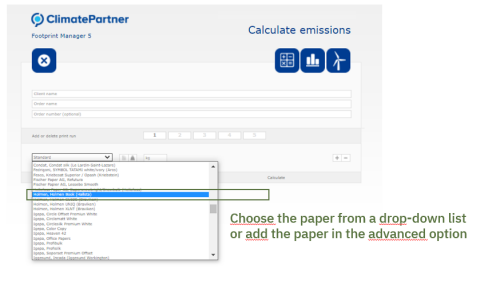There are several businesses that help companies to calculate and offset their greenhouse gas emissions. One of these is ClimatePartner, which was founded 15 years ago in Germany and now has offices and customers all over Europe and the US.
"With an ever-greater focus on fighting climate change, more and more customers are demanding climate-neutral printed products."
"ClimatePartner has always worked with the graphic industry, and we currently have around 1500 customers in this field. Over the years, we’ve amassed a huge amount of data, not least on the greenhouse gas emissions associated with different types of paper and printing processes,” explains Massimo Di Biaggio, ClimatePartner's Country Head in Sweden with responsibility for the Nordic market.
For climate-neutral printed products
ClimatePartner produces climate calculations for a printing firm’s business, but also for their products. And interest is growing.
“With an ever-greater focus on fighting climate change, more and more customers are demanding climate-neutral printed products,” Di Biaggio says. “I find that many people want to do something for the climate and the environment. The option of offering climate-neutral printed products is one way for companies to show that they are serious about their climate ambitions, which is good for the climate and a way to differentiate yourself in the market.”
Work with the simple option ...
It is possible to perform a simple climate calculation or a more advanced one, depending on how in-depth an analysis is required. With the simple option, the printing firm just needs to enter the type of paper they use. ClimatePartner’s database contains emission values for hundreds of different papers.
The emissions that can be used in the calculation are Scope 1–3 in accordance with the Greenhouse Gas (GHG) Protocol. This covers direct emissions of the business, as well as indirect emissions in areas such as electricity, transport, employee commuting and material consumption.
“Because we’ve performed so many climate calculations, we’re able to include a reliable average value. We know, for example, the average energy consumption of a printing firm, and the volume of inputs that are usually consumed,” says Di Biaggio.
... or make the advanced calculation
ClimatePartner also has a tool for performing a more detailed climate calculation for printing firms and print shops, based on actual use and emissions from the individual firm or print shop.
“The benefit of the advanced climate calculation tool is that the printing firm can see how the greenhouse gas emissions are split across the different categories, such as paper, distribution and printing materials. This makes decisions on sustainable choices so much easier. The majority of the emissions are generated during the manufacture of the paper, as the process is extremely energy intensive. A printing firm can significantly reduce the climate footprint of a printed product by choosing a paper supplier that only uses fossil-free electricity, a fact that will be reflected in the emission factor for that type of paper,” adds Massimo Di Biaggio.
Optional carbon offset projects
In addition to climate calculations, ClimatePartner offers the option of carbon offsetting for printed products, via various climate projects aimed at reducing greenhouse gas emissions, from tree planting to the expansion of renewable energy.
“I’ve worked on carbon offsetting projects for many years, taking them from the initial idea to registration. All the projects we offer are audited and approved by third parties and meet internationally accepted standards such as VCS and the Gold Standard. An initiative created by WWF and others, the Gold Standard is the most stringent standard for social and environmental impact. VCS is the most widely used standard for the voluntary offset market, with a focus on transparent and traceable carbon reductions.”
ClimatePartner’s customers can choose from among many carbon offset projects around the world, ranging from forest conservation projects in the Amazon to hydro power projects in Congo. As well as combating climate change, the projects also address other UN Sustainable Development Goals, for example by involving health or education initiatives for the local community.
API for integration on the printer's own website
Every customer that performs climate calculations for their company or their products, and then offsets the remaining carbon emissions via ClimatePartner, has access to a unique page per printed product, where printed material buyers, and others, can go and check the climate footprint.
The climate calculation tool can also be integrated into the printing firm’s website via an API, so customers that place automated orders can see what the carbon footprint of their order will be, and then choose to offset this. Sometimes, the printing firm might have already selected a climate project, while in other cases the buyer is able to choose which project they want to support.
“Here at ClimatePartner, we’re constantly working to improve and launch new tools. We’ve recently developed a network solution that creates a link between paper manufacturers and printing firms, for example. This makes it easier for them to work on reducing their climate footprint,” says Massimo Di Biaggio.
Author: Jacqueline Fahlander


